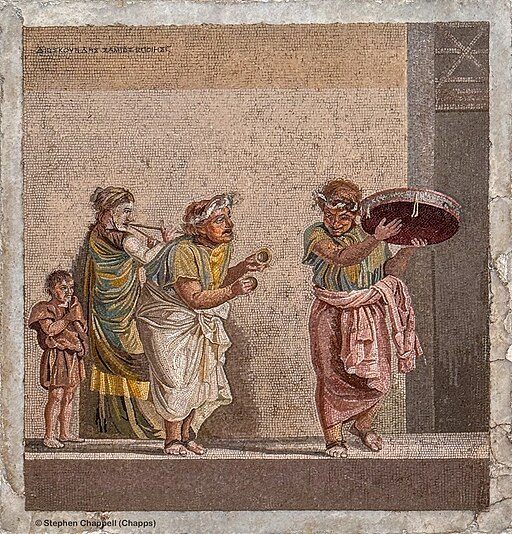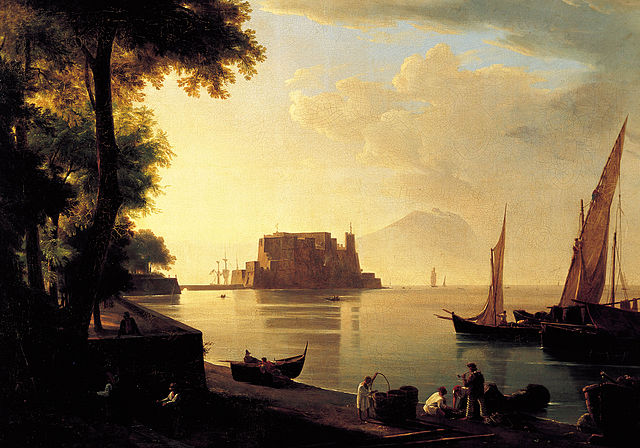“It’s really a treat, being where I am now in my career, to sing music like this.”
Rebecca Myers is talking about the baroque cantatas that she’ll be performing as the soprano soloist in Tempesta di Mare’s Neapolitan Christmas show. “There’s something about it that’s just so pure and simple,” she continues. “In a way, I feel like I can just do the most with it. There’s so much opportunity for ornamentation. It’s really—it’s really just fun.”

The City of a Thousand Faces
Which is totally as it should be. It’s from Naples! For centuries—no, millennia!—Naples, a.k.a. “The City of a Thousand Faces,” has been extolled as one of the most joyful and beautiful destinations in the world.
Perched on one of the most beautiful spots of the Mediterranean coast, sun-kissed and bordered on one side by the blue, blue sea of the Gulf of Naples and by Vesuvius on the other, for millennia Naples has premier standing in world culture as a very special place.

Inspiration, Doom, and oh – Margharita Pizza
Almost from its founding in the 9th century BCE, vacationers and seekers have embraced it as an ideal place in which to frolic, admire, heal and be inspired. Roman emperors holidayed there, 17th-century aristocrats made it a must-see stop on their Grand Tour, 19th-century Romantics were captivated by its unique mixture of abundance and doom (the volcano, you know) and its exposure today is wider than ever, from cultural icons like Susan Sontag and Elena Ferrante to, in close-up, Julia Roberts scarfing down a very tasty-looking slice of margherita pizza in the movie Eat, Pray, Love.
And music! Music is often considered Naples’ preeminent art form, For centuries it has floated over the famous streets, alleys and piazzas, in churches, cathedrals, opera houses, concert halls and elegant salons, and from the balconies and storefronts that are the heart of Naples.
O Sole Mio

Wikimedia Commons)
Since forever, it seems, there has been almost nothing in the world more tuneful, soulful, uplifting—and ubiquitous—than Neapolitan song. A robust folk tradition, generations of skilled composers from Naples’ fabulous music conservatories, and a super-productive Neapolitan Tin Pan Alley have provided tunes that conquer the world. “Funiculi Funicula”? Written in 1880 to promote the new railroad up Vesuvius. That bouncy little ditty that turns up advertising everything from pizza to Rubbermaid? That would be Luigi Ricci’s 1852 Tarentella napoletana. O Sole Mio? Neapolitan—of course—from 1898. Neapolitan song has become practically a genre of its own for headliners like Enrico Caruso, Philadelphia home-boy Mario Lanza, the superstar Three Tenors (Carreras, Domingo and Pavarotti) and Andrea Bocelli.
The Three Tenors weren’t singing Scarlatti, of course. And more’s the pity. Naples’ music in the early baroque provides a particularly sweet chapter in the ongoing story of Neapolitan song. Rebecca Myers will be performing Scarlatti’s Christmas cantata, O di Betlemme…! (Oh Bethlehem…) in Tempesta’s program. It’s a piece for soprano and chamber orchestra probably written for a salon event or private celebration and in a form that was a particular speciality of Scarlatti. He wrote some 600 cantatas for one or two voices, along with instrumental music and, as a premier composer in Naples’ musical establishment, 100-or-so operas.
Rolling-off-the-tongue good
“It’s extremely melodic,” Myers says of O di Betlemme…. “It’s extremely well written. Even in his recitatives, you know exactly what the narrator is saying and it just rolls off the tongue. It feels really good in the voice, it feels very natural. You can think of Scarlatti as a precursor to [18th-century] bel canto singing, literally ‘beautiful singing.’”
And joyful.
“The last movement, it’s a pastoral. The shepherds are so happy and you can just hear it. It’s well executed and beautiful and just so very well done!” says Rebecca Myers.
A joyful Neapolitan Christmas to you! Funiculi funicula, everyone! And happy holidays!

Quotes from Rebecca Myers are personal communication with author via Zoom, November 29, 2024.
Anne Schuster Hunter is a writer and art historian in Philadelphia. www.anneschusterhunter.com.
